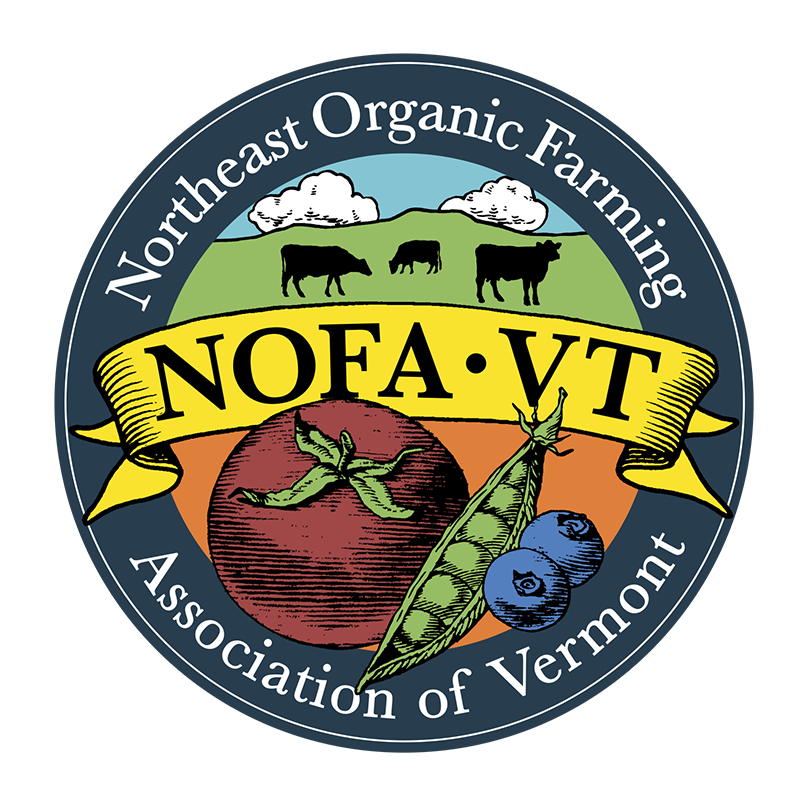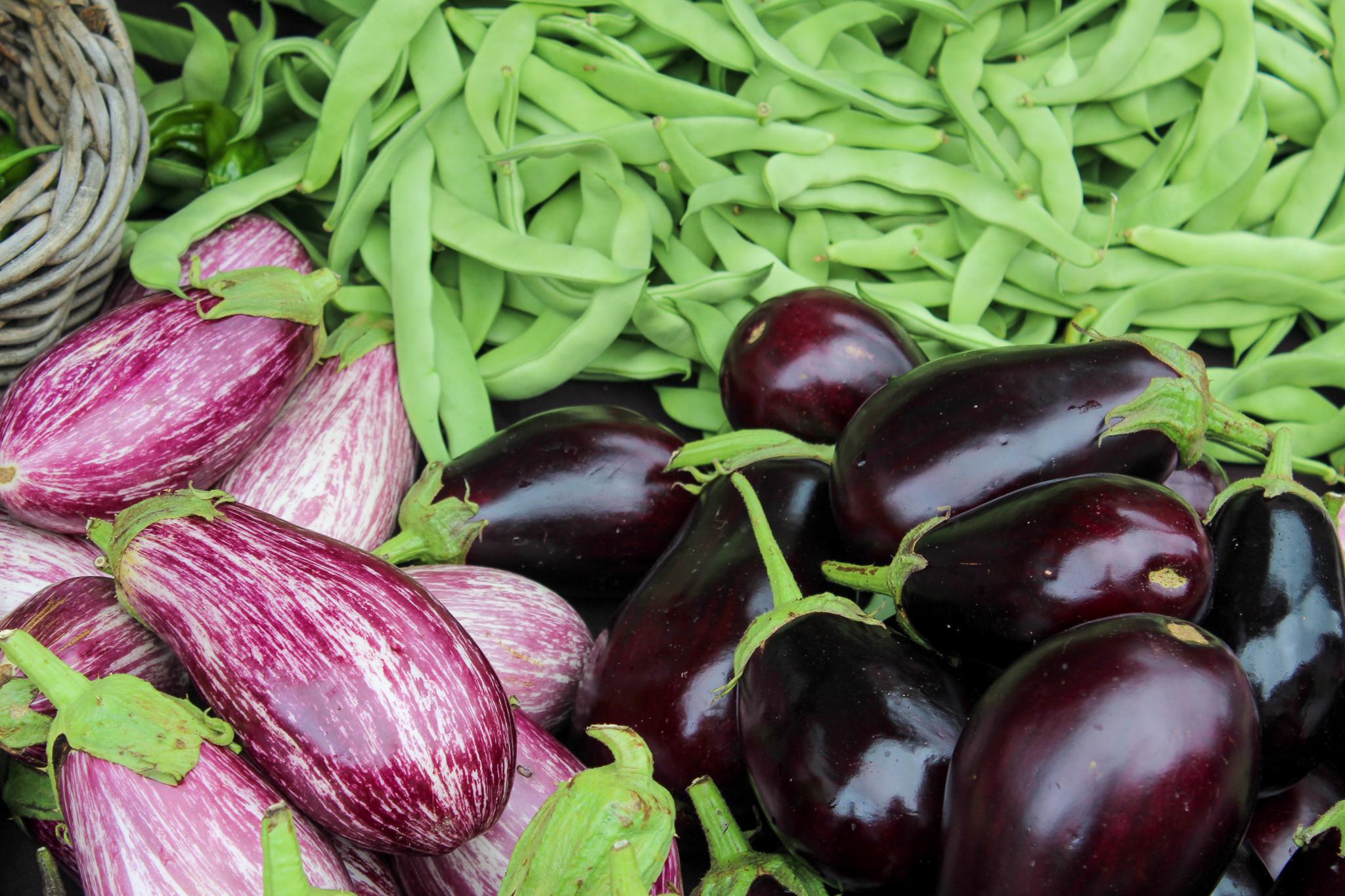NOFA-VT has always been a vital player in farm policy advocacy, currently spearheaded at the staff level by Maddie Kempner, NOFA-VT’s Policy Director, for the past nine years. Successes in recent years include winning $6.9 million in emergency relief for organic dairy farms in crisis, and in 2024, a meaningful $300k public investment in food security programs that support local food access and farm viability.
Throughout the past year, NOFA-VT held several community forums across the state, as well as many one-on-one discussions with farmers and other NOFA-VT members to learn about the issues that are most pressing to the farming community, providing NOFA-VT with a robust list of persistent themes that need to be addressed. Some of the most popular topics that have emerged include land access, farm financing access, health care and insurance access, retirement and farm transfer planning, universal basic income (i.e. direct payments) for farmers and farmworkers, farm housing, restructuring the Use Value Appraisal policy, farm to school and institution improvements, agricultural literacy for the wider community, balancing farm viability with food access to vulnerable folks, and the climate crisis.
To better address the vast body of work ahead and ensure that farmers' voices and perspectives are centered, we formed a policy and organizing committee to steer NOFA-VT’s policy work as a meaningful next step. Since early 2024, this committee of Vermont farmers has been meeting to assess which of the many topics proposed would be the best first issue to address through community action, using the resources and experience within the broader NOFA-VT community. The committee is staffed by Maddie, and, in addition to myself, the other committee members include:
- Scott Greene, Singing Cedars Farmstead (Orwell)
- Eli Hersh, Honey Field Farm (Norwich)
- Margaret Loftus, Crossmolina Farm (Corinth)
- Pete Miller, Miller Farm (Vernon)
- Jacob Powsner, Baird Farm (North Chittenden)
- Katie Spring, Good Heart Farmstead (Worcester)
In April, this group met with Mark Schultz, the former executive director of Minnesota’s Land Stewardship Project and a longtime organizer for successful agricultural policy initiatives spanning decades of work. He facilitated a discussion with the committee to teach us about building community power and how to use a screening tool to determine which issues might be the most impactful for NOFA-VT to put its resources behind. The screening tool asks questions like, “Is this a widely and deeply felt issue?”, “Is there a decision maker who can give us what we want?”, “Does this help us build allies or deepen existing alliances?”, “Is this campaign winnable?” among other guiding queries. We left that meeting with enthusiasm to begin using the screening tool to determine which topics were the right ones for a widespread and strategic campaign.
By the time we met again in July, we had narrowed down our list of issues to run through the screening tool to direct payments to farmers, health care for farmers, climate change, farm-to-school and institution improvements, and food security programs. The stark realities of the climate crisis felt especially pressing given the disastrous flooding that happened exactly one year after 2023’s catastrophic flooding. We discussed how NOFA-VT’s Farmer Emergency Fund and individual farms’ GoFundMe campaigns are essential band-aids in response to catastrophic losses due to climate chaos, but recognized the need for bigger systems change to address the intensity and increased frequency of these extreme weather events. Responding to the increasing frequency of crises is unsustainable and the resources available are currently insufficient. We want to build the resilient foodshed we need, with ample support for farms and farmers who are directly and intensely impacted by the climate crisis while we try to provide a vital public good for our community: food. Choosing one particular issue to pursue as a solution to a challenge as vast as the climate crisis feels daunting and perhaps even impossible, but it is also essential given what Vermont farms and communities have had to contend with these past two summers. Currently, the committee is working on identifying a particular issue and strategy for change to address the climate crisis. We then plan to sharpen that campaign into a cohesive initiative that we can organize around.
Someone recently asked me why I was drawn to working on this committee. The short answer is that I want my efforts as a farmer to make a larger impact on our foodshed and communities than our small farm can accomplish alone. But also, it’s hard on my heart to witness the intensity and frequency of destruction that farms around the state have dealt with in just the past two seasons, and I want to dive into a space of creativity and energy to facilitate solutions and transformation. My body knows firsthand how deeply painful, chaotic, and draining it is to sustain unimaginable damage to a farm from an extreme weather event. Our first farm location was destroyed in 2011 during Tropical Storm Irene when the Mill River carved its new channel through our vegetable fields.
With support from our wide community, we were able to move Evening Song Farm a couple of miles away, out of the river valley. The new location is on a hill, and over time we have learned how to grow vegetables in a way that takes care of the soil on sloping land. Part of our transition included substantial earth moving to create gentle, grassy swales between 40’ wide vegetable gardens that slowly moved excess water from dramatic rain events to the edges of fields where there were already ditches. In the first season, we watched as those ditches turned into raging creeks, causing erosion in the ditches and below the fields in the woods. It didn’t feel responsible to create a downstream erosion issue, so we stuck hundreds of willow cuttings into the ditch to create a living speed trap for the water.
Now, over a decade into our management plan at Evening Song Farm, walking around the fields during an extreme rain event does not elicit the body stress response it used to. July 2023 gave us the opportunity to see the impact of an Irene-scale storm on our farm. The resources and time we put into water movement were worth it; our growing fields are protected from erosion with cover crops, mulches, tarps, and grassy swales, and the water that runs off the swales moves slowly through ditches planted heavily with willows, slowing the water and holding the soil. But the effort we have put in over time to design and manage a place of food production for the chaotic climatic future we are living in has been incredibly daunting, time-consuming, resource-intensive, and potentially unrealistic for many farms without more institutional support. And honestly, I don’t think it should be the sole responsibility of individual farms to redesign food production systems to feed our communities without collective help.
What could it look like to have structures in place to help farms in high-risk areas plan, adapt, or relocate? What type of financial and technical assistance should be available to develop food spaces to be able to withstand extreme weather events if a move is unrealistic? How should Vermont preserve and invest in land for food production, given the reality that the traditionally used spaces (river valleys) are at higher risk and some less common areas (like the hillside we farm on) can be quite effective with creative manipulation? How can we grow the collective understanding that we all depend on the land, that farmers steward that land, and that our farms are an essential underpinning of our ability to have thriving communities? There are only so many disasters a farm can handle recovering from before burning out or being financially unable to continue—and those are losses for us all.
The goal for the work of the NOFA-VT policy and organizing committee is to address the long-term resilience of Vermont farms and communities through organizing powerful state-level policy campaigns. We believe that the policies and changes we pursue here in our brave little state can be a catalyst for change on a larger scale. What policies can we push through here that will be emulated in other states, and hopefully, eventually nationally? We recognize that this work will take more than NOFA-VT’s policy arm and this organizing committee to advance key issues and bring about the effective transformation we need for a resilient future. It will take all of us to mobilize and make our voices heard to build the food system and communities that we need for a thriving future.
Stay tuned for opportunities to engage in community meetings across Vermont in November that NOFA-VT will host to discuss the future of a farm emergency funding campaign. Thirty-nine other states already have financial mechanisms in place to support disaster response and recovery, and with the climate catastrophes we are currently experiencing, now is the time for Vermont to have a more effective plan for our farms and communities. If you’re interested in making your voice heard on these and other issues that impact you and your community, NOFA-VT offers opportunities for you to get involved. Get your friends and family to join NOFA-VT’s membership, attend an organizing meeting this fall, and let’s amplify the need for collective action around our food future.

